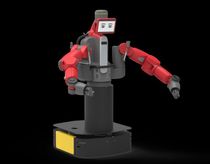Segway

The Segway is a self-balancing electric scooter that you steer by leaning in the direction you want to go. It's used by commuters, patrol officers, tour groups, and also as a platform for mobile robots.
- Creators
- Year
- 2001
- Country
- United States 🇺🇸
- Categories
- Features
Did you know?
Segway polo, a variation of horse polo, with players riding on Segways, became popular among some Silicon Valley residents, including Apple cofounder Steve Wozniak.


History
The Segway was invented by Dean Kamen and a team of engineers from DEKA Research and unveiled in 2001. Sales started the following year amid great hype and speculation about its potential to transform personal transportation. After several years on the market, the vehicle didn't reach the sales levels its creators and investors expected. Several cities around the world banned Segways from sidewalks and public roads due to safety concerns. In 2003, Segway developed the Segway Robotic Mobility Platform (RMP) to serve as a platform for researchers building mobile robots. In 2010, Segway Inc. was acquired by a group led by British entrepreneur Jimi Heselden, who died later that year in an accident involving a Segway near one of his properties in the United Kingdom. The balancing technology used in the Segway is part of another Kamen invention: the iBot is a robotic wheelchair that can navigate rough terrain and climb stairs.


More Images


Specs
- Overview
Able to carry up to 118 kg (260 lb), including rider and cargo. Capable of turning in place. Equipped with redundant control systems.
- Status
Ongoing
- Year
2001
- Website
- Width
- 63 cm
- Height
- 130 cm (i2 model)
- Length
- 48 cm
- Weight
- 47.7 kg
- Speed
- 20 km/h (max)
- Sensors
Two tilt sensors, five gyroscopes.
- Actuators
Two servo drive motors with redundant winding and electric circuits.
- Compute
Dual control computers
- Power
Lithium-ion battery. Range of 38 km (24 mi).
- Cost
- $6,000 to $7,000 (retail, i2 model)







